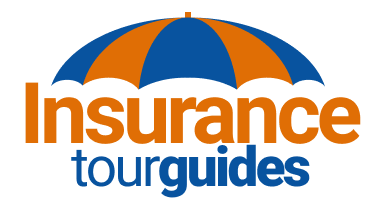If you’ve ever looked at your health insurance paperwork and seen acronyms like HSA or FSA and felt your eyes glaze over, you’re not alone. But here’s the thing: understanding how Health Savings Accounts (HSAs) and Flexible Spending Accounts (FSAs) work alongside your insurance can help you save a ton of money—especially when it comes to taxes and out-of-pocket costs.
These accounts aren’t just bureaucratic red tape. They’re powerful tools that make health expenses more manageable, especially when used strategically with your health plan.
HSA vs. FSA: What’s the Difference?
Before diving into how they work with your insurance, it helps to understand what sets HSAs and FSAs apart. Here’s a quick breakdown:
| Feature | HSA (Health Savings Account) | FSA (Flexible Spending Account) |
|---|---|---|
| Who Can Open It? | Only if enrolled in a high-deductible health plan (HDHP) | Anyone with employer offering an FSA |
| Is It Tax-Advantaged? | Yes — contributions, growth, and withdrawals are tax-free | Yes — contributions are pre-tax |
| Funds Rollover? | Yes — funds roll over year to year | Usually no — “use it or lose it” each year |
| Is It Portable? | Yes — stays with you if you change jobs | No — linked to your employer |
| Investment Options? | Yes — once you hit a minimum balance | No — no investment capabilities |
Both accounts are designed to help you pay for qualifying medical expenses using pre-tax dollars—but they work a little differently when paired with your insurance.
How HSAs Work With Health Insurance
HSAs are only available if you’re enrolled in a high-deductible health plan (HDHP). These plans have lower monthly premiums but higher deductibles, meaning you pay more upfront before insurance kicks in. That’s where the HSA becomes valuable.
Using HSA Funds with Insurance
When you visit the doctor or fill a prescription, you can use your HSA debit card to pay for eligible expenses like:
-
Copays
-
Deductibles
-
Prescription drugs
-
Lab tests
-
Physical therapy
-
Dental and vision care
The expenses must be out-of-pocket and not reimbursed by insurance. As your insurance covers more of your bills throughout the year, your HSA can fill in the gaps tax-free.
Triple Tax Advantage
HSAs come with one of the best tax deals around:
-
Contributions are pre-tax
-
Money grows tax-free (including interest and investments)
-
Withdrawals for qualified expenses are tax-free
You can even use it as a long-term savings tool by investing your funds and letting them grow for future healthcare costs—even into retirement.
How FSAs Work With Insurance
FSAs are employer-sponsored accounts that also let you set aside pre-tax money for medical expenses. But you don’t need a high-deductible plan to qualify—just an employer that offers the benefit.
Coordinating FSA With Your Insurance
Your FSA can help with:
-
Paying your deductible
-
Covering copays
-
Buying prescription and over-the-counter medications
-
Paying for vision or dental care
-
Covering expenses not fully reimbursed by insurance
Even if your insurance only partially pays for something—like physical therapy or a specialist visit—you can use your FSA to cover the rest.
Watch Out for the Use-It-or-Lose-It Rule
Most FSAs don’t let you roll over unused funds into the next year. If you contribute $2,000 and only use $1,200, the remaining $800 disappears unless your employer offers a grace period or small rollover allowance.
To avoid losing money:
-
Budget your expected medical costs
-
Schedule appointments and procedures before year-end
-
Use your FSA for recurring expenses like prescriptions or contact lenses
Maximizing Tax Benefits from HSAs and FSAs
To get the most from these accounts, it helps to pair them strategically with your health insurance plan. Here are a few tips to make it work:
Know What Counts as a Qualified Expense
Use your account funds only for IRS-approved medical expenses to avoid taxes and penalties. Eligible expenses include:
-
Doctor visits
-
Dental work
-
Vision exams and glasses
-
Prescription meds
-
Mental health services
-
Medical equipment like CPAP machines or crutches
The IRS publishes a full list each year, and many account providers offer searchable databases.
Time Large Expenses Wisely
If you know a big health cost is coming—like surgery or orthodontics—it might be worth increasing your FSA contributions during open enrollment or holding off until you’ve built up your HSA balance.
Combine with Preventive Care
Many insurance plans cover preventive care like annual physicals or screenings at no cost. Pairing this with HSA/FSA savings for other expenses can reduce your overall out-of-pocket burden.
Keep Your Receipts
Even if you don’t use your HSA or FSA funds right away, save receipts for eligible expenses. You can reimburse yourself from an HSA later—even years down the road—as long as the expense was qualified and occurred after you opened the account.
Can You Have Both an HSA and FSA?
Usually, no. If you’re enrolled in an HSA-eligible plan, you typically can’t also contribute to a general-purpose FSA. However, there are exceptions.
You can have a Limited Purpose FSA, which can be used alongside an HSA. These FSAs are restricted to:
-
Dental expenses
-
Vision expenses
This combo allows you to save HSA funds for future medical needs while still using FSA dollars for routine eye or dental care.
Who Benefits Most from Each?
Here’s a quick table to help figure out which account is best for your situation:
| You Might Prefer an HSA If… | You Might Prefer an FSA If… |
|---|---|
| You have a high-deductible health plan | You have a standard health plan through your employer |
| You want long-term savings and investment options | You want simple tax savings for short-term expenses |
| You’re comfortable estimating medical costs over time | You have predictable, recurring expenses each year |
| You want your savings to stay with you job to job | You don’t mind using funds within one calendar year |
Final Thought: Don’t Leave Free Money on the Table
If your employer contributes to your HSA or FSA, that’s essentially free money. Make sure you’re taking advantage of any contributions or matching programs, and use open enrollment season to reevaluate your choices based on your health needs and insurance plan.
Whether you’re managing chronic conditions, planning for a growing family, or just want to spend smarter, understanding how your insurance works with HSAs and FSAs can give you more control—and keep more cash in your pocket.
Sources
-
IRS Publication 969: Health Savings Accounts and Other Tax-Favored Health Plans
-
Healthcare.gov: HSA and FSA Basics
-
Society for Human Resource Management: HSA vs. FSA Comparison
-
Fidelity: How to Maximize Your HSA for Health Care Savings

